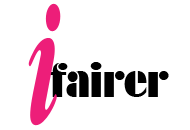1 of 1 parts
Agile vs. Waterfall: Choosing the Right Methodology

When embarking on a new project, one of the most critical decisions you'll face is selecting the appropriate project management methodology. Two of the most popular methodologies are Agile and Waterfall. Each has its strengths and weaknesses, and understanding these can help you determine which is the best fit for your project.
Waterfall Methodology
The Waterfall methodology is a linear, sequential approach to project management. It is often used in industries where processes are well-defined and changes are costly or risky, such as construction and manufacturing. The Waterfall model consists of distinct phases: requirements, design, implementation, verification, and maintenance. Each phase must be completed before moving on to the next, ensuring a structured and disciplined process.
Advantages of Waterfall:
1. Clarity and Structure: Each phase has clear goals and deliverables, making it easier to manage and track progress.
2. Documentation: Extensive documentation is created at each stage, providing a comprehensive guide for the project.
3. Predictability: With a well-defined plan, it is easier to predict timelines, budgets, and resources.
Disadvantages of Waterfall:
1. Inflexibility: Changes are difficult and costly to implement once a phase is completed.
2. Late Testing: Testing occurs at the end of the project, which can lead to the discovery of significant issues late in the process.
3. Customer Involvement: Limited customer involvement after the initial requirements phase can lead to a final product that does not meet client expectations.
Agile Methodology
Agile is an iterative, flexible approach to project management, emphasizing collaboration, customer feedback, and small, incremental improvements. It is widely used in software development and industries where requirements are expected to evolve during the project. Agile methodologies, such as Scrum and Kanban, break projects into small, manageable units called sprints or iterations, allowing teams to deliver functional parts of the project quickly and adjust based on feedback.
Advantages of Agile:
1. Flexibility: Agile allows for changes and adjustments throughout the project, making it ideal for projects with evolving requirements.
2. Continuous Feedback: Regular feedback from customers and stakeholders ensures the project remains aligned with their needs.
3. Early and Frequent Delivery: Delivering small, functional parts of the project early and often allows for continuous improvement and early detection of issues.
Disadvantages of Agile:
1. Less Predictability: Frequent changes can make it challenging to predict timelines and budgets accurately.
2. Requires Discipline: Agile teams must be disciplined in their processes and communication to avoid chaos and ensure smooth progress.
3. Resource Intensive: Agile can require more resources, including time and personnel, to manage the continuous iterations and feedback loops.
In conclusion, both Agile and Waterfall methodologies offer unique advantages and challenges. By carefully considering your project's specific needs, industry standards, and client expectations, you can choose the methodology that best aligns with your goals and ensures project success.
Latest Gossips
Mixed Bag
 Astrology and Ayurveda: Balancing Energies
Astrology and Ayurveda: Balancing Energies
Astrology and Ayurveda are ancient sciences that work together to bring harmony and balance to the mind...... Lunar Phases and Their Impact in Astrology
Lunar Phases and Their Impact in Astrology
The Moon has a profound influence in astrology, governing emotions, intuition, and subconscious patterns...... Ford Mustang vs. Chevrolet Camaro: A Legendary Rivalry
Ford Mustang vs. Chevrolet Camaro: A Legendary Rivalry
The battle between the Ford Mustang and Chevrolet Camaro is one of the most iconic rivalries in the ...... Baingan Bharta: Smoked Eggplant Delight
Baingan Bharta: Smoked Eggplant Delight
Baingan Bharta is a beloved North Indian dish that celebrates the rich, smoky flavors of roasted eggplant......
Most Popular
Dare To Share
 Bully Is Back
Bully Is Back
The boy who sexually harassed me..
Read More... Man hitting
Man hitting
I am a house girl in one of the posh estates in Mombasa. I know......
Read More... Past Relation
Past Relation
I have a son and my fiance has no clue. What do i do? I am 31 and....
Read More...
check outclick money scam review. Recently, new review of click money is posted on clickmoneyscam.com

